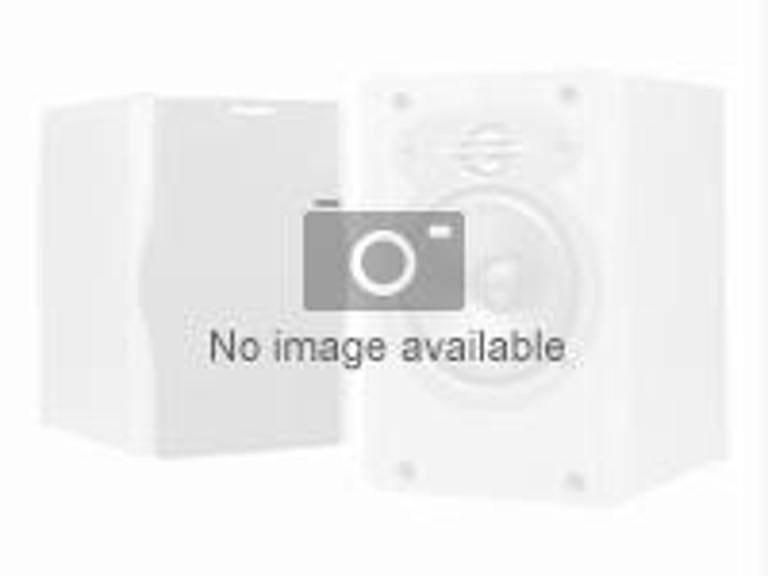JBL's speaker designs have always been innovative, but the company's 6.1-channel package, the SCS160SI, was still a pleasant surprise. The sats, though smaller than the sort you see in a lot of budget HTIBs, sound bigger and better than those other flyweight minis. And the large, solidly constructed subwoofer leaves no doubt about the ensemble's low-frequency potency. The SCS160SI's $499 list price makes the kit a good value for people seeking discreet speakers that pack home-theater punch.
There are six 8-inch-tall satellites; one is for the center-back channel. If you have a 5.1-channel receiver, hold on to the extra sat--it'll come in handy if you ever need a spare or upgrade to a 6.1-channel system. The sats and the horizontally oriented center-front speaker are tastefully styled: each plastic cabinet is dark gray with a rich-looking black grille. The subwoofer, which matches the speakers in color, is a vinyl-wrapped beast that stands on four rather large, rubbery feet. It weighs 35 pounds and measures 17.75 inches high, 15.75 inches wide, and 16.75 inches deep.
The Good
The Bad
The Bottom Line
Getting tiny satellites and a muscular sub to work together as one coherent package is difficult, and the SCS160SI was only moderately successful. Trying hard to bridge the sat-to-sub midbass gap, we wound up setting our receiver's crossover control to 120Hz or 100Hz. You'll get the best out of this system if you have a flexible receiver. And unless your room is very small, don't stash the subwoofer in a corner; we got the smoothest sub/sat integration when we kept the sub within two feet of one of the front speakers.
As true two-way models, the satellites each incorporate a 0.5-inch titanium-laminate tweeter and two 3-inch drivers. The 150-watt powered subwoofer pumps out deep bass with a downward-firing 10-inch woofer.
The subwoofer's only adjustment is a volume knob. Since the sub was designed specifically for the SCS160SI's sats, we weren't surprised that it doesn't offer crossover settings. We were more concerned about the lack of a phase control, which can help you achieve the best sat/sub blend. When the phase is incorrect, it's harder to confirm that the sub's woofer is in sync with the sats' drivers.
We regularly spot the sats' spring-clip wire connectors in budget HTIB speaker packages, but they're out of place in this midpriced system. The sub accepts either the subwoofer line-level output found on most current A/V receivers, or the speaker-level connections of older units.
The kit includes speaker cables and brackets for wall-mounting the satellites.
The hilarious Dogma DVD belts out the sounds of fire and brimstone, the song of celestial choirs, and ethereal special effects. The tiny JBL sats didn't mind; this system's sonics can easily fill rooms of up to 300 square feet.
For gunfire and explosions, we turned to the Hunted DVD. The ensemble produced remarkably dynamic audio, and the satellites didn't inhibit the action. Dialogue was fairly natural, and the center speaker only occasionally betrayed its diminutive size. Despite our best efforts to create a smooth blend, however, we did hear some discontinuity between the sats and the subwoofer.
Unlike many tiny speakers, the sats weren't bright or trebly, making for easy DVD listening. The sub sounded powerful. And the system can certainly play nice and loud.
Performance on CDs was much less consistent. The sats came across as anemic and small on our jazz albums, and the sub's rendering of the acoustic bass was somewhat boomy and sloppy. The system did redeem itself on less subtle music, such as Songs for the Deaf from Queens of the Stone Age. Dave Grohl's slammin' drum kit thundered in all the right places, and burning guitar riffs kept the energy high.
All in all, the SCS160SI lacks the refinement of, say, Polk Audio's RM6005 package, but the JBL outpaces the Polk on more visceral material.



